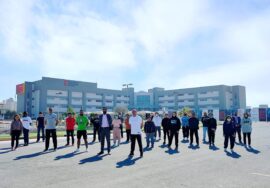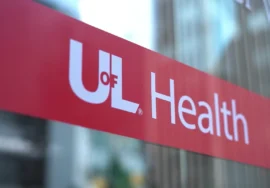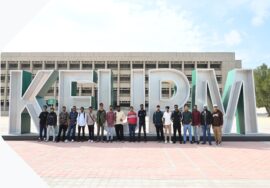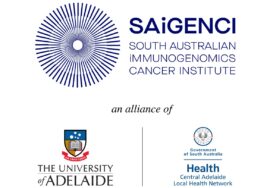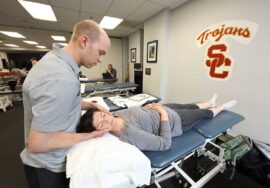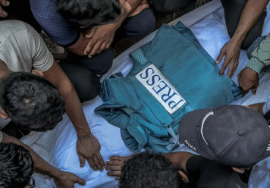
Mohammad Saad – Orthopedic Trauma Surgeon at CMHC | Healing Trauma, Restoring Lives
Introduction: The Art and Science of Bones and Recovery
In the realm of medicine, orthopedic surgeons serve as architects of physical recovery, reconstructing broken bones, realigning joints, and restoring mobility. Among those committed to this challenging field is Mohammad Saad, DO, a newly appointed Orthopedic Trauma Surgeon at Central Maine Medical Center (CMHC). His journey from training across multiple institutions to caring for fracture victims and complex injuries reflects the commitment required to mend lives piece by piece. He enters a community where trauma care, acute fractures, and post-injury rehabilitation intersect, carrying both clinical skill and compassion.
CMHC recently welcomed Dr. Saad into its orthopedic team, highlighting the hospital’s drive to strengthen trauma services and surgical capacity in central Maine. As Dr. Saad integrates into this environment, his role will involve managing polytrauma, joint fractures, periarticular injuries, and trauma around joint replacements. This profile explores his background, training, clinical interests, challenges of trauma orthopedics, and vision for his work at CMHC while also ending with a short “About Me” that introduces you, Mohammad Saad (SEO Specialist).
Educational Background & Training
Mohammad Saad’s professional credentials reflect rigorous medical and surgical training. According to CMHC’s provider profile, Dr. Saad completed his undergraduate education at Salisbury University, Maryland. He then attended Touro College of Osteopathic Medicine in New York City for medical school.
His residency training was at McLaren Macomb, part of Michigan State University’s system (Mount Clemens, MI). After residency, he pursued a Fellowship in Orthopedic Trauma at the University of Pittsburgh Medical Center (UPMC) a respected center known for complex trauma and reconstructive orthopedic work.
This pathway from medical school to residency to specialized fellowship is the conventional arc for those entering complex orthopedic trauma. The exposure to high-volume trauma centers and multidisciplinary care prepares surgeons like Dr. Saad for the pressures of managing life-altering fractures, limb salvage scenarios, and post-op complications.
Joining CMHC: Strengthening Orthopedic Trauma Care
In December 2024, CMHC officially announced the arrival of Dr. Saad Mohammad, DO as a new orthopedic trauma surgeon. The hospital described that Dr. Saad brings “a wealth of expertise in orthopedic care,” and that his aligned commitment to compassionate, patient-centered treatment matches the institution’s goals.
CMHC’s orthopedic and trauma service plays a critical role in treating fractures, acute injuries, and complex musculoskeletal trauma in the region. Bringing in a specialist in orthopedic trauma aims to improve outcomes, reduce delays, and expand local capacity so patients less often need to travel far for advanced care. For Dr. Saad, this position also presents the opportunity to serve a community with acute needs, build relationships with local healthcare systems, and integrate into regional trauma networks.
Clinical Specialties & Focus Areas
According to his provider profile, Dr. Saad’s clinical interests include a range of trauma and fracture care topics:
- Polytrauma: Managing patients who arrive with multiple fractures across different limbs or parts of the body.
- Fractures of the acetabulum & pelvis: Injuries to the pelvic ring and hip sockets, which often require advanced reconstruction.
- Hip fractures: Common in elderly populations and often requiring surgical fixation or replacement.
- Periarticular fractures: Fractures near joints (knees, elbows, ankles) that require precise alignment and fixation.
- Fractures around joint replacements: Managing fractures adjacent to prosthetic implants, which pose unique challenges due to existing hardware, altered bone mechanics, and sometimes limited bone stock.
These areas span both high-volume common injuries (hip fractures) and technically demanding cases (acetabular, periarticular, post-arthroplasty fractures). The combination demands not just mechanical skill but sound surgical judgment, preoperative planning, and often coordination with rehabilitation, infectious disease, vascular, and plastic surgery services.
The Landscape of Orthopedic Trauma
To understand Dr. Saad’s work, one must understand the challenges rooted in orthopedic trauma care:
- Time sensitivity: In trauma settings, delays in fixation or stabilization can increase complications (nonunion, malalignment, soft tissue damage).
- Soft tissue management: Traumatic fractures often involve damage to muscles, skin, nerves, and vessels not just bones. Surgeons must plan fixation in harmony with soft tissue healing.
- Complex anatomy: Pelvic, acetabular, periarticular fractures require three-dimensional understanding of anatomy and precision in reduction and fixation.
- Bone quality and co-morbidities: Many patients have underlying conditions osteoporosis, diabetes, vascular disease that complicate healing.
- Rehabilitation integration: Postoperative care, physiotherapy, weight-bearing protocols, and monitoring for complications are essential.
- Resource limitations: In community hospitals, access to advanced implants, imaging, surgical support, and postoperative care can be constrained compared to academic centers.
Dr. Saad’s training at UPMC likely exposed him to high-volume, resource-rich trauma settings, giving him a strong base. His role at CMHC may involve adapting those principles to a new environment, optimizing workflows, and mentoring local teams.
Early Approach: Values and Patient Philosophy
In his provider profile, Dr. Saad shares a guiding principle:
“I believe everyone deserves healthcare regardless of their status. I aim to treat everyone with respect and humility.”
This statement reflects both a surgeon’s ethical foundation and a patient-friendly philosophy. For an orthopedic trauma surgeon, humility and respect matter greatly patients often come in pain, frightened, and vulnerable. Ensuring that dignity, informed consent, clear communication, and shared decision-making are integral to his approach can differentiate surgical technical excellence from truly holistic care.
In community settings, such values also build trust and patient acceptance especially when dealing with long recoveries, implants, rehab demands, and sometimes complications. The trust factor can drive better follow-up, patient adherence to therapy, and overall outcomes.
Transitioning from Fellowship to Community Practice
Moving from a large academic center to a community or regional hospital involves transitions in environment, resources, and expectations. For Dr. Saad, some likely adjustments include:
- Ensuring a robust trauma workflow (triage, imaging, operating room readiness, OR staff training).
- Developing relationships with emergency medicine, radiology, vascular, plastic, and rehabilitation teams locally.
- Adjusting implant selection, cost management, and supply chain for hardware in local hospital contexts.
- Mentoring or training local surgeons and staff to handle complex fractures.
- Setting protocols and quality metrics (infection rates, nonunions, reoperation rates) for his service line.
His prior fellowship experience at UPMC, exposure to cutting-edge trauma algorithms, and academic training should help him lead this transition.
Cases and Impact: Illustrative Scenarios (Hypothetical, Based on Role)
Because public sources don’t publish specific cases, we can imagine typical scenarios Dr. Saad might handle and how his approach can shape outcomes:
- High-energy automobile accident: A patient arrives with fractures in the femur, tibia, and wrist. Dr. Saad coordinates stabilization, staged fixation, soft tissue coverage, and early mobility. His timeliness and surgical planning can minimize complications like compartment syndrome or infection.
- Elderly hip fracture: An older patient presents with a displaced femoral neck fracture. Dr. Saad assesses bone quality, comorbidities, and presents options (fixation vs arthroplasty). With community-level capacity, quick surgery and rehab integration can reduce mortality risk.
- Periprosthetic fracture: A patient with a prior knee replacement experiences a fracture adjacent to the prosthesis. Dr. Saad must decide whether to revise the implant, use locking plates, or bridge constructs—balancing bone stock preservation, stability, and soft tissue constraints.
- Acetabular fracture from fall: Complex pelvic fractures demand careful reduction. Dr. Saad plans preoperative imaging, 3D modeling, surgical approach (e.g., anterior, posterior), and implants. His fellowship training at UPMC would inform his technique and reconstructive strategy.
In each scenario, his surgical judgment, communication with multidisciplinary teams, and ability to adapt to local resources matter as much as technical skill.
Challenges in Performance & Growth
As a newer surgeon at CMHC, Dr. Saad likely faces challenges including:
- Building patient volume and referral networks: Establishing his presence so more patients trust him.
- Continuing academic engagement: Maintaining involvement in publication, teaching, research, which is harder in community practice.
- Resource / implant access: Ensuring the hospital carries necessary hardware, stock, and instrument sets for advanced trauma procedures.
- Team training and infrastructure: Upgrading OR staff, imaging protocols, trauma alert systems, postoperative rehab coordination.
- Balancing player load and complexity: High-complexity trauma cases compete with elective work; triaging and scheduling becomes essential.
If Dr. Saad successfully manages these, he can significantly raise the standard of orthopedic trauma care in his region.
Vision for Growth & Legacy
Looking ahead, Dr. Saad’s impact could expand in multiple directions:
- Establishing a regional trauma center: CMHC may become a hub for surrounding counties, reducing the need to transfer patients far for advanced care.
- Publishing community-based outcomes: Sharing data, case series, complication rates, and local innovations in orthopedic trauma.
- Training future surgeons: Mentoring residents or fellows, building educational programs in trauma orthopedics.
- Adopting technology: Integrating 3D printing, patient-specific implants, intraoperative navigation systems, surgical planning software, or teleconsultation for remote fracture care.
- Community outreach & injury prevention: Engaging public health initiatives for fall prevention, safety regulations, and education on bone health.
Over time, Dr. Saad’s legacy may be measured not only by individual surgeries but by how he reshapes orthopedic trauma care in his region and how many surgeons he influences.
Conclusion
Mohammad Saad, DO, is an orthopedic trauma surgeon now serving at Central Maine Medical Center, bringing with him training from UPMC, expertise in fracture care, and a compassionate philosophy of patient respect. His role in managing polytrauma, periarticular fractures, hip injuries, and trauma adjacent to joints positions him as a critical asset in CMHC’s surgical team.
While transitions from academic fellow to community trauma leader are challenging, his values, training, and surgical skill equip him to make a substantial impact. The region gains a capable surgeon; patients gain access to local care; the hospital gains trauma capacity.
About Me – Mohammad Saad, SEO Specialist
While this article highlights Mohammad Saad, DO, the orthopedic trauma surgeon at CMHC, I’d like to introduce myself: I am Mohammad Saad, based in Pakistan, working as an SEO Specialist & Digital Marketer. My role is to help brands be seen online, create content that ranks, and develop strategies that grow audiences sustainably.
You can explore my portfolio and past work at muhammadsaad.exytex.com.
Though our fields differ one mending bones, the other shaping digital presence we share a mission of facilitating recovery: one for physical life, the other for online visibility.


